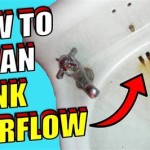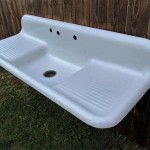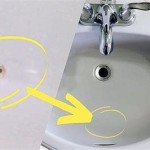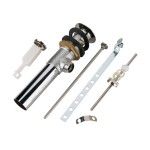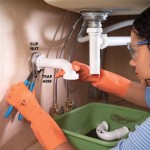Kitchen Faucet Leaking Under Sink
A leaky kitchen faucet can be a major nuisance, not to mention a waste of water and money. Leaky faucets usually occur under the sink as a result of a worn-out washer or gasket. This can cause water to drip or leak from the base of the faucet, leading to potential water damage and higher water bills.
Causes of a Leaking Kitchen Faucet Under Sink
Several factors can contribute to a leaky kitchen faucet under the sink:
- Worn-out washer: The washer is a rubber or plastic seal that sits between the faucet handle and the valve seat. Over time, the washer can become worn or damaged, allowing water to leak through.
- Damaged gasket: The gasket is another seal that helps prevent leaks. It is located between the faucet body and the sink. If the gasket is damaged or worn, water can seep through.
- Loose connections: The nuts and bolts that hold the faucet in place can become loose over time. This can cause the faucet to move, which can damage the washer or gasket and lead to leaks.
- Faulty cartridge: In some faucets, a cartridge controls the flow of water. If the cartridge is faulty, it can allow water to leak from the base of the faucet.
Steps to Fix a Kitchen Faucet Leaking Under Sink
Fixing a leaky kitchen faucet under the sink is a relatively simple task that can be completed with a few basic tools:
- Turn off the water supply: Before starting any work, turn off the water supply to the faucet. There should be two shut-off valves under the sink, one for hot water and one for cold water. Turn both valves clockwise to close them.
- Release any remaining water: Open the faucet to release any remaining water in the lines. This will help prevent water from spilling out when you remove the faucet.
- Remove the faucet handle: Most faucet handles are held in place by a screw or hex nut. Use a screwdriver or wrench to remove the handle.
- Remove the packing nut: Once the handle is removed, you will see the packing nut. This is a large nut that holds the faucet in place. Use a wrench to loosen and remove the packing nut.
- Replace the washer or gasket: Inspect the washer or gasket for any signs of damage or wear. If it is damaged, replace it with a new one. Make sure to use the correct size and type of washer or gasket for your faucet.
- Tighten the packing nut: Once the washer or gasket is replaced, tighten the packing nut securely. Be careful not to overtighten, as this can damage the faucet.
- Reinstall the faucet handle: Reinstall the faucet handle and tighten the screw or hex nut to secure it.
- Turn on the water supply: Slowly turn on the water supply valves under the sink. Check for any leaks around the faucet. If there are no leaks, the repair is complete.
Tips for Preventing Kitchen Faucet Leaks
To prevent kitchen faucet leaks, follow these tips:
- Inspect your faucet regularly for any signs of leaks.
- Tighten any loose nuts or bolts.
- Replace washers and gaskets as needed.
- Avoid using harsh chemicals or abrasives on your faucet.
- If you are not comfortable with DIY repairs, call a qualified plumber for assistance.

How To Fix Pipework A Tap Faucet Leaking Under The Sink

How To Fix A Sink Sprayer Leaking In The Kitchen Full Guide

Sealing A Leaky Faucet Base Plate 1 Tom Plumber
Kitchen Faucet Leaking Under Sick Diy Home Improvement Forum

Leak Under Sink In Kitchen 6 Most Likely Causes

Plumbing How To Fix A Small Faucet Leak At The Base Home Improvement Stack Exchange

How To Fix A Sink Leak Supply Valve Lines Faucet

Leak Under Sink In Kitchen 6 Most Likely Causes

Plumbing Leak Under Sink When Dishwasher Runs

How To Fix A Kitchen Faucet Leaking From The Handle Taskrabbit Blog

